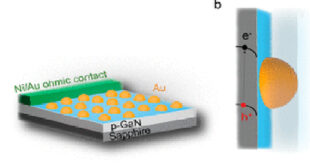International Journal of Multiphase Flow, Volume 69, 2015, Pages 102-114.
R. Skartlien1, 5, 6, E. Sollum2, 1, F. Fakharian3, 1, T.L. Palmer4
[expand title=”Show Affiliations”]- FACE – The Multiphase Flow Assurance and Innovation Center, P.O. Box 40, N-2027 Kjeller, Norway
- Norwegian Institute for Air Research (NILU), P.O. Box 100, N-2027 Kjeller, Norway
- Technische Universität München, Arcisstraße 21, 80333 München, Germany
- Department of Physics, University of Oslo, P.O. Box 1048, Blindern, N-0316 Oslo, Norway
- Institute for Energy Technology (IFE), P.O. Box 40, N-2027 Kjeller, Norway
- Department of Chemical Engineering, NTNU, N-7491 Trondheim, Norway
Abstract
Numerical 3D simulations of turbulent, stratified two-phase shear flow with a surfactant laden interface were used to test and develop a phenomenological interfacial roughness scale model where the energy required to deform the interface (buoyancy, interfacial tension, and viscous work) is proportional to the turbulent kinetic energy adjacent to the interface.
The turbulence was forced in the upper and lower liquids in the simulations, to emulate the interfacial dynamics without requiring (prohibitively) large simulation domains and Reynolds numbers. The addition of surfactant lead to an increased roughness scale (for the same turbulent kinetic energy) due to the introduction of interfacial dilatational elasticity that suppressed horizontal motion parallel to the interface, and enhanced the vertical motion.
The phenomenological roughness scale model was not fully developed for dilatational elasticity in this work, but we proposed a source term that represents surfactant induced pressure fluctuations near the interface. This source term should be developed further to account for the relation between surfactant density fluctuations and turbulence adjacent to the interface. We foresee that the roughness scale model can be used as a basis for more general interfacial closure relations in Reynolds averaged turbulence models, where also mobile surfactant is accounted for.
 Advances in Engineering Advances in Engineering features breaking research judged by Advances in Engineering advisory team to be of key importance in the Engineering field. Papers are selected from over 10,000 published each week from most peer reviewed journals.
Advances in Engineering Advances in Engineering features breaking research judged by Advances in Engineering advisory team to be of key importance in the Engineering field. Papers are selected from over 10,000 published each week from most peer reviewed journals.

